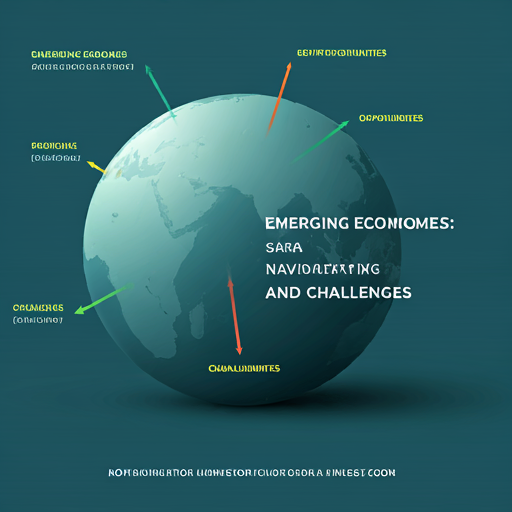Introduction to Emerging Economies
Definition and Characteristics
Emerging economies ar nations with developing financial systems and lower income levels compared to developed countries. These economies often exhibit rapid growth potential. They can be characterized by a young population, increasing urbanization, and a rising middle class.
Investors often find opportunities in sectors like technology, agriculture, and renewable energy. These sectors can drive significant returns. However, emerging markets also face challenges such as political instability and inadequate infrastructure. These factors can deter investment.
Investors should consider the following characteristics:
Understanding these elements is crucial. Knowledge is power in investing.
Importance in the Global Economy
Emerging economies play a pivotal role in the global economy by contributing significantly to GDP growth and trade dynamics. These nations often serve as new markets for goods and services, driving demand for various industries. This demand can lead to increased foreign direct investment, which stimulates local economies.
Moreover, emerging markets are becoming essential players in global supply chains. They provide cost-effective labor and resources, enhancing competitiveness. This shift can lead to greater economic interdependence among nations.
Additionally, emerging economies often exhibit higher growth rates compared to developed countries. This trend attracts investors seeking higher returns. Understanding these markets is vital for strategic investment decisions. Knowledge is key in navigating complexities.
Current Trends in Cryptocurrency Adoption
Growth of Blockchain Technology
The growth of blockchain technology is reshaping various industries, particularly finance. This decentralized ledger system enhances transparency and security in transactions. As a result, it reduces the risk of fraud. Many companies are now exploring blockchain for supply chain management and identity verification. These applications can streamline operations and improve efficiency.
Furthermore, the rise of decentralized finance (DeFi) platforms is notable. These platforms offer financial services without traditional intermediaries. This shift democratizes access to financial products. Investors are increasingly drawn to the potential of smart contracts. They automate processes and reducf costs .
Understanding these trends is essential for informed investment. Knowledge empowers strategic decision-making.
Increased Interest from Retail and Institutional Investors
In recent years, there has been a notable increase in interest from both retail and institutional investors in cryptocurrencies. This trend is driven by the potential for high returns and portfolio diversification. Many investors view cryptocurrencies as a hedge against inflation. This perspective is gaining traction.
Institutional investors are now allocating significant capital to digital assets. They recognize the growing legitimacy of cryptocurrencies. Retail investors are also participating through user-friendly platforms. This accessibility encourages broader market participation.
Key factors influencing this interest include:
Understanding these dynamics is crucial. Knowledge leads to better investment choices.
Opportunities for Investors in Emerging Markets
Access to Untapped Markets
Access to untapped markets presents significant opportunities for investors in emerging economies. These markets often exhibit rapid growth potential due to increasing consumer demand. Investors can capitalize on sectors such as technology, agriculture, and renewable energy. This diversification can enhance portfolio performance.
Moreover, emerging markets frequently have lower competition compared to developed regions. This environment allows for greater market penetration. Investors should consider the following advantages:
Understanding these factors is essential for strategic investment. Knowledge is crucial for success.
Potential for High Returns
Emerging markets offer a compelling potential for high returns, attracting savvy investors. These markets often experience rapid economic growth, which can lead to substantial capital appreciation. Investors can benefit from early entry into developing sectors. This strategy can yield significant profits over time.
Additionally, the volatility in these markets can create opportunities for strategic investments. Investors who understand market dynamics can capitalize on price fluctuations. Key factors contributing to high returns include:
Recognizing these elements is vital for maximizing gains. Knowledge is essential for informed decisions.
Challenges Faced by Investors
Regulatory Uncertainty
Regulatory uncertainty poses significant challenges for investors in emerging markets. This uncertainty can stem from inconsistent policies and lack of clear guidelines. Such an environment complicates investment decisions. Investors may hesitate to commit capital due to potential legal risks.
Moreover, sudden regulatory changes can impact market dynamics. These shifts may lead to unexpected losses. Key challenges include:
Understanding these risks is crucial for effective risk management. Knowledge helps mitigate potential pitfalls.
Market Volatility and Risks
Market volatility presents significant risks for investors in emerging markets. Fluctuations in asset prices can occur due to economic instability or geopolitical events. These sudden changes can lead to substantial financial losses. Investors must be prepared for unpredictable market conditions.
Additionally, liquidity issues can exacerbate volatility. Limited market participation may hinder the ability to execute trades efficiently. Key risks include:
Understanding these factors is essential for effective risk management. Knowledge is vital for informed decisions.
Strategies for Successful Investment
Diversification and Risk Management
Diversification is a crucial strategy for effective risk management in investment portfolios. By spreading investments across various asset classes, investors can mitigate potential losses. This approach reduces exposure to any single market or sector. A well-diversified portfolio can enhance overall returns while minimizing volatility.
Investors should consider including a mix of equities, bonds, and alternative assets. This variety can provide stability during market fluctuations. Key strategies include:
Understanding these strategies is essential for long-term success. Knowledge empowers better investment choices.
Staying Informed and Adapting to Changes
Staying informed is essential for successful investment strategies. Investors must continuously monitor market trends and economic indicators. This vigilance allows for timely adjustments to their portfolios. Adapting to changes can enhance resilience against market volatility.
Furthermore, utilizing reliable financial news sources and analytical tools is crucial. These resources provide valuable insights into emerging opportunities. Key practices include:
Understanding these practices can lead to better decision-making. Knowledge is a powerful tool.
